A warriors' love story
In 1844, he met Giuditta Tavani, a girl of barely fourteen, being a frequent visitor to the material warehouse of her father. They married almost immediately in the parish of S. Crisogono in Rome.
In spite of Giuditta's young age, she saw in Francesco a man who, like her, loved 'liberty' and supported a secular Italian State. They married immediately and fought together to defend the Roman Republic, which, nevertheless fell into French hands in 1849, restoring the Papal Government.
They followed the retreat towards the Adriatic to avoid heavy papal reprisals, they headed, with Garibaldi, towards Venice. Subsequently, still refugees, passing through Romagna, where they continued to conspire, then re-entered Rome, hidden to organise its liberation. Here they frequented the home and the wool shop of Giulio Ajani (1835–1890), a forgotten patriot of the time, in the Lungaretta in Trastevere.
The battle in the Ajani wool mill.
In the late morning of 25 October 1867 around forty 'patriots', of whom twenty-five were Romans were meeting in via della Lungaretta 97, in the Roman region of Trastevere, within Giulio Ajani's wool factory. The group, who were conspiring against the government of Pope Pius IX, anticipated that a direct attack by Giuseppe Garibaldi on Rome would follow shortly after. The battle at Villa Glori on 23 October 1867 caused everyone to expect an attack and a popular uprising.
Francesco Arquati, his wife, one of their three sons, Antonio, and their comrades had gathered to prepare cartridges, restock the rifles of their arsenal, and be ready to support Garibaldi, in what they thought would be an imminent attack on Rome.
At around half past twelve, a platoon of papal zuavos from via del Moro, the perpendicular street in Trastevere attacked the wool-mill building. The conspirators tried to resist the fire. Within a short time, however, the papal troops had the better of the situation, and managed to take the building. A few conspirators managed to escape whilst others were captured. In the fire, nine people were killed, amongst whom, Giudita Arquati, pregnant with her fourth child, her husband and their young son.
In 1939, the remains of Francesco, his wife Giuditta, and their son Antonio, were transported to the Monumental Charnel House on the Janiculum hill.
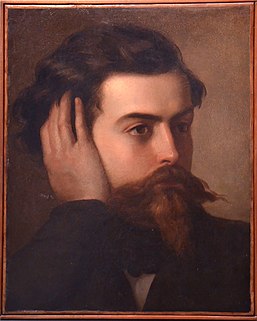
Goffredo Mameli was an Italian patriot, poet, writer and a notable figure in the Risorgimento. He is also the author of the lyrics of "Il Canto degli Italiani", the national anthem of Italy.

Italian unification, also known as the Risorgimento, was the 19th-century political and social movement that resulted in the consolidation of different states of the Italian Peninsula into a single state, the Kingdom of Italy. Inspired by the rebellions in the 1820s and 1830s against the outcome of the Congress of Vienna, the unification process was precipitated by the revolutions of 1848, and reached completion in 1871, when Rome was officially designated the capital of the Kingdom of Italy.

Victor Emmanuel II was King of Sardinia from 1849 until 17 March 1861, when he assumed the title of King of Italy and became the first king of a united Italy since the 6th century, a title he held until his death in 1878. Borrowing from the old Latin title Pater Patriae of the Roman emperors, the Italians gave him the epithet of Father of the Fatherland.
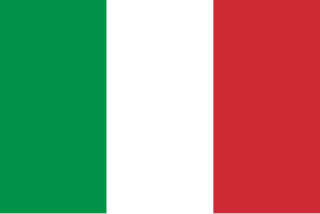
The flag of Italy, often referred to in Italian as il Tricolore, is the national flag of Italy. It is a tricolour featuring three equally sized vertical pales of green, white and red, national colours of Italy, with the green at the hoist side, as defined by article 12 of the Constitution of the Italian Republic. The Italian law regulates its use and display, protecting its defense and providing for the crime of insulting it; it also prescribes its teaching in Italian schools together with other national symbols of Italy.
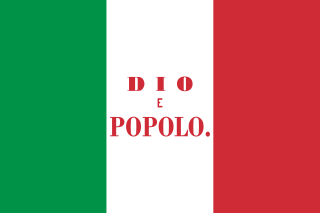
The Roman Republic was a short-lived state declared on 9 February 1849, when the government of the Papal States was temporarily replaced by a republican government due to Pope Pius IX's flight to Gaeta. The republic was led by Carlo Armellini, Giuseppe Mazzini, and Aurelio Saffi. Together they formed a triumvirate, a reflection of a form of government in the ancient Roman Republic.

Agostino Depretis was an Italian statesman and politician. He served as Prime Minister of Italy for several stretches between 1876 and 1887, and was leader of the Historical Left parliamentary group for more than a decade. He is the fourth-longest serving Prime Minister in Italian history, after Benito Mussolini, Giovanni Giolitti and Silvio Berlusconi. Depretis is widely considered one of the most powerful and important politicians in Italian history.

Trastevere is the 13th rione of Rome: it is identified by the initials R. XIII and it is located within the Municipio I. Its name comes from the Latin trans Tiberim, meaning literally "beyond the Tiber".
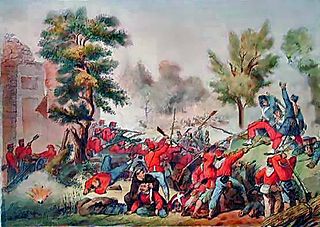
The Battle of the Volturno refers to a series of military clashes between Giuseppe Garibaldi's volunteers and the troops of the Kingdom of Two Sicilies occurring around the river Volturno, between the cities of Capua and Caserta in northern Campania, in September and October 1860. The main battle took place on the 1 October 1860 between 30,000 Garibaldines and 25,000 Bourbon troops (Neapolitans).

Carlo Ademollo was an Italian painter, best known for his scenes from the Risorgimento.

The Battle of Mentana was fought on November 3, 1867 near the village of Mentana, located north-east of Rome, between French-Papal troops and the Italian volunteers led by Giuseppe Garibaldi, who were attempting to capture Rome, then the main centre of the peninsula still outside of the newly unified Kingdom of Italy. The battle ended in a victory by the French-Papal troops.

Mario Rutelli was an Italian sculptor.

Giuditta Tavani Arquati was an Italian republican patriot, a notable figure in the Italian Risorgimento and a martyr for the cause of a United Italy.

Carmine Crocco, known as Donatello or sometimes Donatelli, was an Italian brigand. Initially a Bourbon soldier, later he fought in the service of Giuseppe Garibaldi.
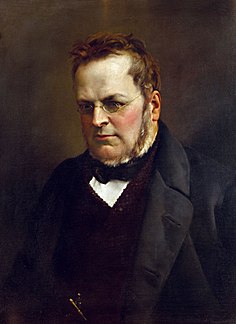
Camillo Paolo Filippo Giulio Benso, Count of Cavour, Isolabella and Leri, generally known as Cavour, was an Italian statesman and a leading figure in the movement towards Italian unification. He was one of the leaders of the Historical Right, and Prime Minister of the Kingdom of Piedmont–Sardinia, a position he maintained throughout the Second Italian War of Independence and Giuseppe Garibaldi's campaigns to unite Italy. After the declaration of a united Kingdom of Italy, Cavour took office as the first Prime Minister of Italy; he died after only three months in office, and thus did not live to see Venetia or Rome added to the new Italian nation.
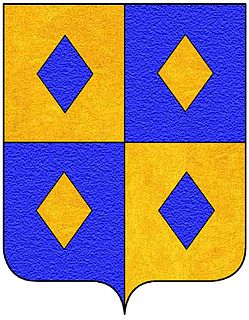
The Rospigliosi family is an ancient noble Italian family from Pistoia. Attested since the Middle Ages, it became wealthy through agriculture, trade and industry, reaching the apogee of its power and the high nobility status in Rome thanks to Giulio Rospigliosi, elected pope in 1667 with the name of Clement IX.
The Moderate Party, collectively called Moderates, was an Italian pre-Unification political rally, active during the Risorgimento (1815–1861). The Moderates were never a formal party, but only a movement of liberal-minded reformist patriots, usually secular, from politics, military, literature and philosophy.
Francesco Fiorentino was an Italian philosopher and historiographer.

Hermann Kanzler was a German general who commanded the Army of the Papal States and was the arms minister during the reign of Pope Pius IX. He led Papal forces during the Battle of Mentana against Italian troops.
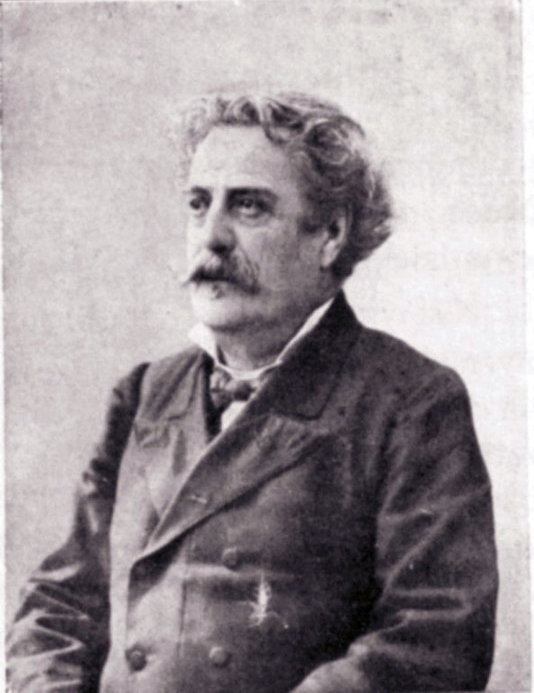
Raffaello Giovagnoli was an Italian writer, patriot and politician.
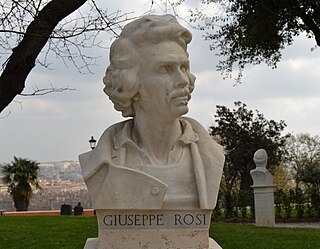
Giuseppe Rosi was an Italian poet and patriot known as "Poeta Pastore".

















